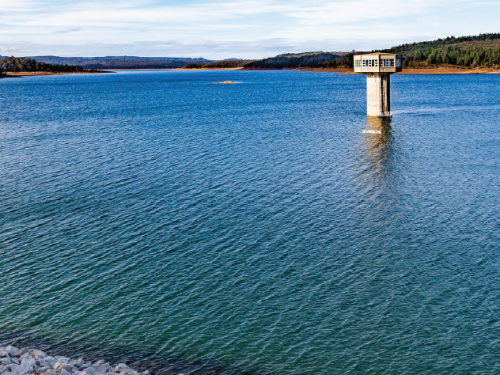Dam inflows vary, but quarter of NSW still in ‘intense drought’

Several dams hardest hit by the ongoing drought in New South Wales have experienced welcome reprieve with recent rainfall resulting in the first inflows in years and a minor increase to dam levels.
But while widespread rain has provided localised relief and considerable environmental benefit, northern dams have largely missed out on major inflows and drought conditions remain.
Keepit Dam – which services the township of Walgett as well as other needs on the Namoi River – has seen the best of the increases, rising to 11.2% from 0.6% of capacity just weeks before.
After ongoing rainfall, 21 gigalitres (GL) has flowed into Keepit over the last few weeks which is now holding 53GL, up from 9GL at the same time last year.
Welcome flows have also hit Copeton Dam with 18GL over the past week, bringing levels up to 10.8% capacity, an increase from 9.3% a week earlier. Burrendong rose from 1.6% to 4.2%.
Tamworth has received consistent rainfall; however, only limited amounts have fallen in the Chaffey Dam catchment, with storage levels increasing incrementally from around 13% to 14.4%. Significant follow up rain will still be required to make any substantial difference to the water security situation.
Pindari (9.5%), Split Rock (4%) have also received small-volume inflows, while Toonumbar (64.3%) near Kyogle and Brogo (100%) on the South Coast were notable exceptions.
While these storage increases provide brief respite, much of the state is still in drought. As of the 25 February, 98.9% of the state remains in drought with 23.6% experiencing “intense drought”.
Hunter Water storages have increased to 39%. Lostock Dam is sitting at 93.2% up 8.4%.
“Some parts of the state hardest ravaged by ongoing drought have seen very welcome water flow into dwindling storages,” WaterNSW executive manager of system operations, Adrian Langdon said.
“While these inflows are not drought-breaking, they will provide much needed relief for several communities. WaterNSW will continue to forge ahead with projects that will improve the state’s drought resilience.”
Read more on WaterNSW drought management information.
Originally published by WaterNSW, 2 March 2020.
